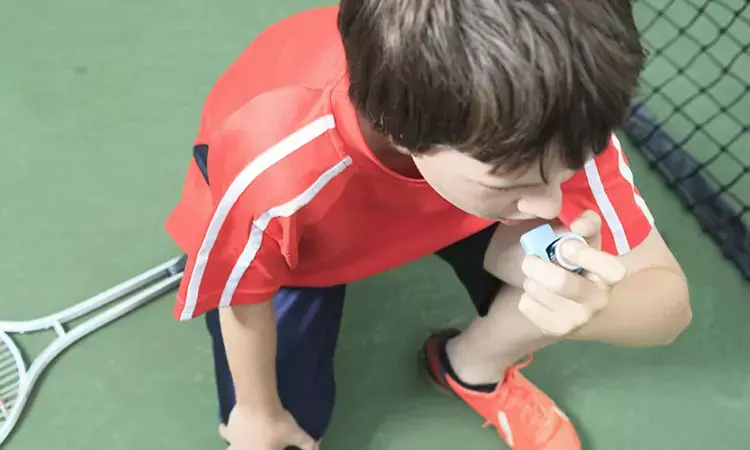- Home
- Medical news & Guidelines
- Anesthesiology
- Cardiology and CTVS
- Critical Care
- Dentistry
- Dermatology
- Diabetes and Endocrinology
- ENT
- Gastroenterology
- Medicine
- Nephrology
- Neurology
- Obstretics-Gynaecology
- Oncology
- Ophthalmology
- Orthopaedics
- Pediatrics-Neonatology
- Psychiatry
- Pulmonology
- Radiology
- Surgery
- Urology
- Laboratory Medicine
- Diet
- Nursing
- Paramedical
- Physiotherapy
- Health news
- Fact Check
- Bone Health Fact Check
- Brain Health Fact Check
- Cancer Related Fact Check
- Child Care Fact Check
- Dental and oral health fact check
- Diabetes and metabolic health fact check
- Diet and Nutrition Fact Check
- Eye and ENT Care Fact Check
- Fitness fact check
- Gut health fact check
- Heart health fact check
- Kidney health fact check
- Medical education fact check
- Men's health fact check
- Respiratory fact check
- Skin and hair care fact check
- Vaccine and Immunization fact check
- Women's health fact check
- AYUSH
- State News
- Andaman and Nicobar Islands
- Andhra Pradesh
- Arunachal Pradesh
- Assam
- Bihar
- Chandigarh
- Chattisgarh
- Dadra and Nagar Haveli
- Daman and Diu
- Delhi
- Goa
- Gujarat
- Haryana
- Himachal Pradesh
- Jammu & Kashmir
- Jharkhand
- Karnataka
- Kerala
- Ladakh
- Lakshadweep
- Madhya Pradesh
- Maharashtra
- Manipur
- Meghalaya
- Mizoram
- Nagaland
- Odisha
- Puducherry
- Punjab
- Rajasthan
- Sikkim
- Tamil Nadu
- Telangana
- Tripura
- Uttar Pradesh
- Uttrakhand
- West Bengal
- Medical Education
- Industry
Indoor air filtration can improve breathing in asthma children: JAMA

China: Indoor air filtration can improve airflow through improved airway mechanics and function as well as reduced inflammation in children with asthma, according to a recent study in the journal JAMA Pediatrics.
Particulate matter (PM 2.5) are fine particles and a ubiquitous air pollutant that can deposit in the small airways. They play a vital role in asthma. The use of PM2.5 filtration devices in improving respiratory inflammation and small airway physiology in asthmatic children is unknown.
Xiaoxing Cui, Nicholas School of the Environment, Duke University, Durham, North Carolina, and colleagues discovered pathophysiological changes in the small airways associated with using a PM2.5-removing device in the bedrooms of children with asthma.
This cross-over, double-blind study enrolled children with mild or moderate asthma. The participants used a true filtration device and a sham filtration device in their bedrooms in a random order for 2 weeks each with a 2-week washout interval. The study was conducted in a suburb of Shanghai, China, during a low-ozone season. A total of 43 children (5-13 years old; 26 boys [60%]) participated in the study.
The researchers measured ozone and PM2.5 were inside bedrooms and outside a window. Impulse oscillometry, spirometry, and fractional exhaled nitric oxide were measured at the beginning and the end of each intervention.
Key findings of the study include:
- Outdoor 24-hour mean PM2.5concentrations were moderately high, ranging from 28.6 to 69.8 μg/m3 (median, 53 μg/m3).
- During true filtration, bedroom PM2.5 concentrations were a mean (SD) of 63.4% (35.9%) lower than during sham filtration.
- Compared with sham filtration, true filtration was significantly associated with improved airway mechanics, reflected in a 24.4% reduction in total airway resistance, a 43.5% reduction in small airway resistance, a 22.2% in resonant frequency, and a 73.1% increase in airway reactance.
- True filtration was also associated with significant improvements in fractional exhaled nitric oxide (a 27.6% reduction) and peak expiratory flow (a 1.6% increase).
- These improvements were significantly associated with bedroom PM2.5 reduction.
- Improvements in small airway function were nonsignificant (8.4%) in all participants but significant (13.2%) in participants without eosinophilic airway inflammation at baseline.
- No improvements were observed for forced vital capacity, forced expiratory volume during the first second, and the ratio of these in all participants or subgroups.
"Per these results, indoor PM2.5 filtration can be a practical method to improve airflow in an asthmatic lung through improved airway mechanics and function as well as reduced inflammation. This warrants a clinical trial to confirm," concluded the authors.
The study, "Association Between Bedroom Particulate Matter Filtration and Changes in Airway Pathophysiology in Children With Asthma," is published in the journal JAMA Pediatrics.
DOI: 10.1001/jamapediatrics.2020.0140
Dr Kamal Kant Kohli-MBBS, DTCD- a chest specialist with more than 30 years of practice and a flair for writing clinical articles, Dr Kamal Kant Kohli joined Medical Dialogues as a Chief Editor of Medical News. Besides writing articles, as an editor, he proofreads and verifies all the medical content published on Medical Dialogues including those coming from journals, studies,medical conferences,guidelines etc. Email: drkohli@medicaldialogues.in. Contact no. 011-43720751


